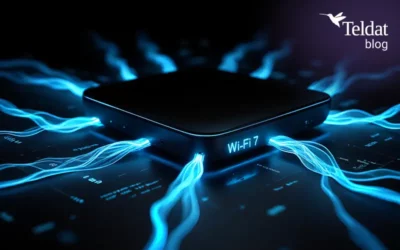
Another limitation of traditional cybersecurity solutions is that they generate a large number of false positives. This can be overwhelming for security teams, who must manually investigate each alert to determine if it is a real threat. The sheer volume of alerts generated by traditional cybersecurity solutions can make it difficult for security teams to identify and respond to genuine threats in a timely manner.
How AI-Based detection and response mechanisms can help CISOs fight against cyber threats
To address these limitations, cybersecurity professionals are turning to Artificial Intelligence AI-based solutions such as XDR and CARTA. XDR (Extended Detection & Response) is an AI-based solution that combines several data sources like traffic information, infrastructure information or security events information into a single platform.
This allows security teams to detect and respond to threats more quickly and efficiently. This enables it to detect new and emerging threats, even if they have never been seen before – Zero-day attacks.
XDR can also reduce the number of false positives generated by traditional cybersecurity solutions, by using AI to filter out alerts that are not genuine threats.
XDR can identify patterns and anomalies in data that human analysts may miss, providing valuable insights into potential security incidents. Detection techniques are very varied, but the ones based on AI, enables organizations to reduce the mean time to detect (MTTD) new threats.
The second technology is CARTA (Continuous Adaptive Risk and Trust Assessment). Another important tool for CISOs in 2023. It’s a solution based on Artificial Intelligence – AI, that can help CISO’s fight against cybersecurity threats. As a risk management approach that continuously assesses and adapts to changing security risks and threats. It is designed to be flexible and dynamic, enabling organizations to adjust their security posture as the threat landscape evolves.
Moreover, one of the key benefits of CARTA is that it takes a risk-based approach to cybersecurity. Instead of relying on a one-size-fits-all approach, CARTA tailors its defenses to the specific risks faced by each organization. This allows security teams to focus their efforts on the most critical and complex threats, while routine and repetitive tasks are handled by the automation.
Also, CARTA is based on the principle that “security is not a one-time event, but an ongoing process”. This means that it involves a continuous cycle of risk assessment, monitoring, and response.
Finally, CARTA enables organizations to make more informed decisions about risk management. By continuously assessing their security posture, organizations can identify vulnerabilities and prioritize remediation efforts based on the level of risk they pose.
This last point enables organizations to be more agile in responding to new security threats generating responses or a response proposal to security team, reducing the mean time to respond (MTTR) to any detected threat.
How Teldat is helping
Teldat’s XDR gathers network information with be.Safe XDR, security information with be.SAFE and infrastructure information with CNM, and, using response rules, can generate an automatic response to change the configuration of a single firewall in be.SAFE or the entire network within SD-WAN.
On the other hand, Teldat is developing new security solutions following the CARTA precepts that will enable companies to have a security system capable of creating a response automatically, to change the configuration of the nework, aiming at the mitigation of any cyber threat. This automatic response is generated by an AI capable of characterizing the threat and generating the correct response, reducing the mean time to respond (MTTR) to the minimum.


























